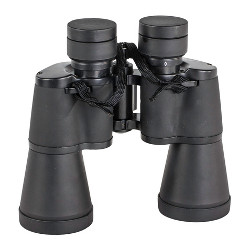
Visualization enables effective data exploration by harnessing the higher bandwidth interactivity of the human visual cortex. But the space of possible visualizations is immense, such that general abstractions for creating (that is, finding) the right visualization are elusive, despite recent progress in systems like vega2 and Draco.1
The following paper provides a general abstraction, along with advanced interfaces, focusing on visualization search. If you have ever created a long sequence of visualizations looking for interesting patterns, you have manually performed a visualization search task. The visualization search problem is to find subsets of the data that, when suitably rendered, generate a visualization like a provided pattern specification. This task is intuitively difficult, requiring at least a model of visualization similarity, a representation of a massive search space, a strategy for navigating the search space, and appropriate interfaces through which users can express specifications. The authors approach these challenges by designing a shape query algebra consisting of primitives and operators that can describe complex functions; that is, "trend lines." The algebra assembles complex patterns from simple segments, akin to the way complex continuous functions are approximated by assemblies of piecewise linear functions in engineering and science (for example, finite element models).
The key insight of the ShapeSearch algebra is that reasoning about regions of a function that are rising, falling, or flat is simple enough to capture a user's notion of pattern, but expressive enough to model complex patterns. For example, a peak pattern rises then falls, a plateau rises and is then flat. By including expressions that can reference preceding or subsequent segments, the language can capture patterns such as "rising, then rising more sharply." In addition to sequencing via concatenation, conjunctions and disjunctions are supported; for example, the value should rise AND not fall in each region. Other convenience extensions include quantifiers (the value should rise at least once and at most twice), nesting (a peak within a given range), and iteration (look for a peak anywhere within a given range); these extensions can be rewritten using core primitives.
Shapesearch expressions are designed to be ambiguous—matching and scoring ambiguous expressions against a dataset is a key contribution.
Shapesearch expressions are designed to be ambiguous—matching and scoring ambiguous expressions against a dataset is another key contribution. Each segment is scored using an inverse tangent expression to produce a value between −1 and 1; these segment scores are then aggregated to produce expression scores. Fuzzy matches involve underspecified queries, where the start and/or end point of a region is left to the system to find—a potentially expensive search. A dynamic programming algorithm provides an accurate but expensive baseline, while a provably optimal approximate algorithm significantly reduces the search space by observing that start and end points will typically fall at critical points of the underlying function (that is, where the slope changes direction), then matching and merging the query segments, greedily, according to their score.
Shapesearch supports a natural language interface for novice users, speech-to-text scenarios, and integration with other NL services, a regular expression interface for more complex expressions, and a sketching interface for drawing patterns by hand. The sketching interface promotes visual patterns as the primary model for reasoning about subsets of data—not equations, not complicated queries or code, not unreliable labels or metadata. It is this idea that separates ShapeSearch from other proposals for visualization search, including Draco1 and Voyager.3
Shapesearch represents a significant departure from conventional data analysis approaches by lifting approximate visual patterns as a first-class component of interaction and computation. This work has the potential to help develop a class of software and methods subscribing to this view, and, as the authors point out, immediately suggests some intriguing directions for future work: better interfaces to support mixing sketches and code, auto-complete features to support incremental composition of complex queries, and search over different attributes simultaneously.



Join the Discussion (0)
Become a Member or Sign In to Post a Comment